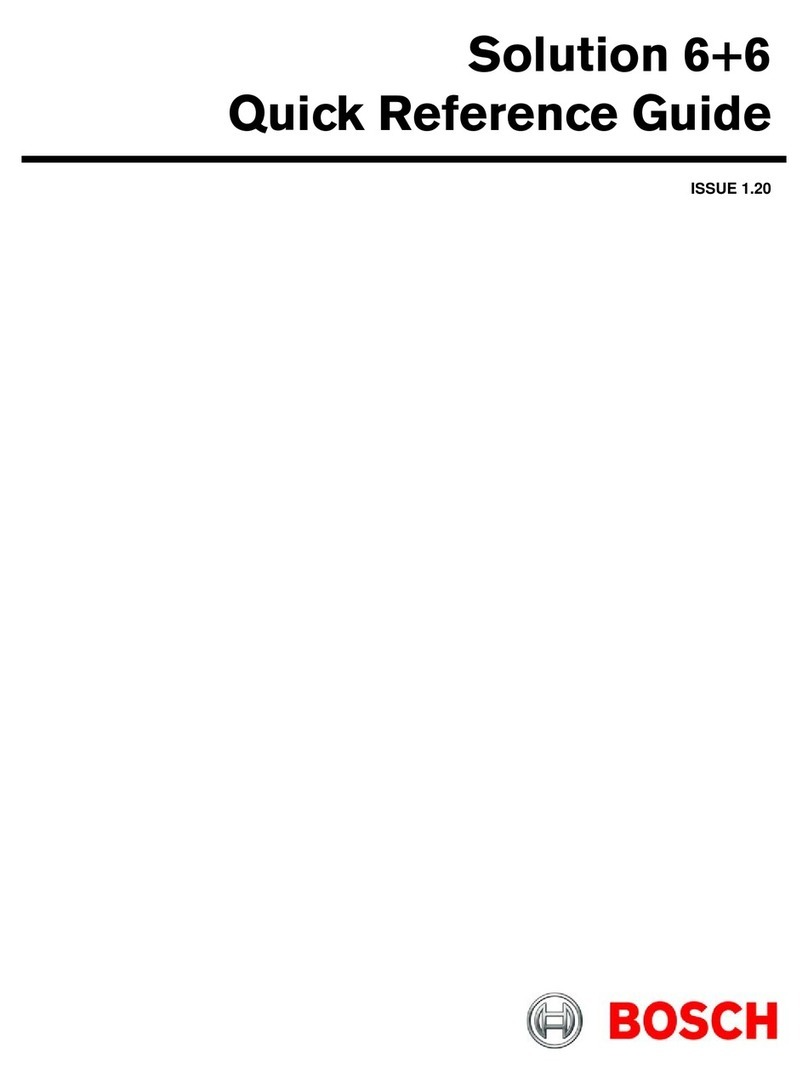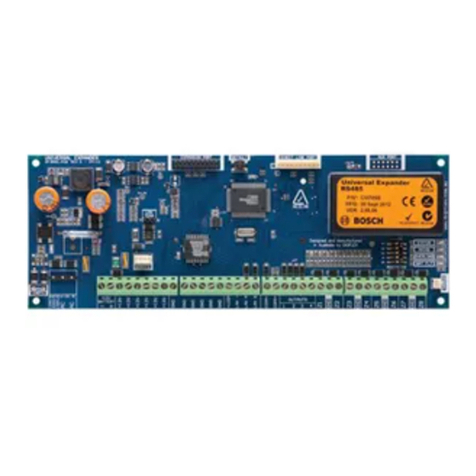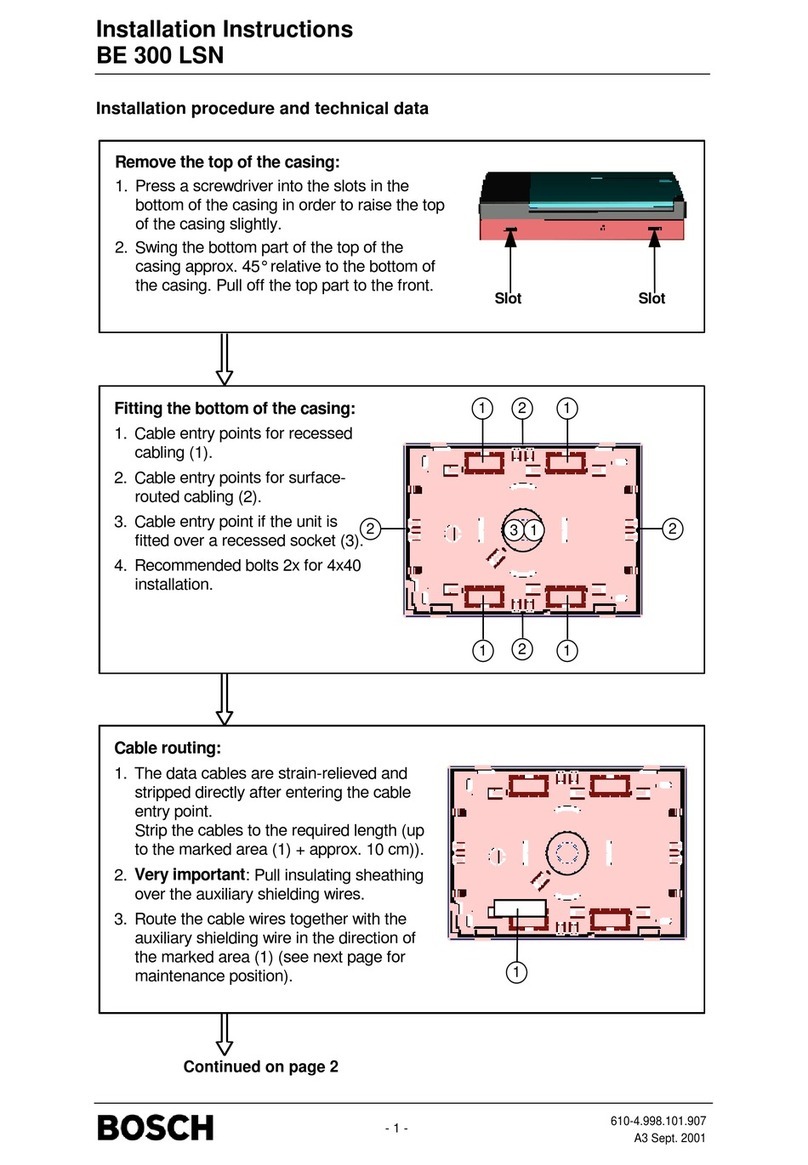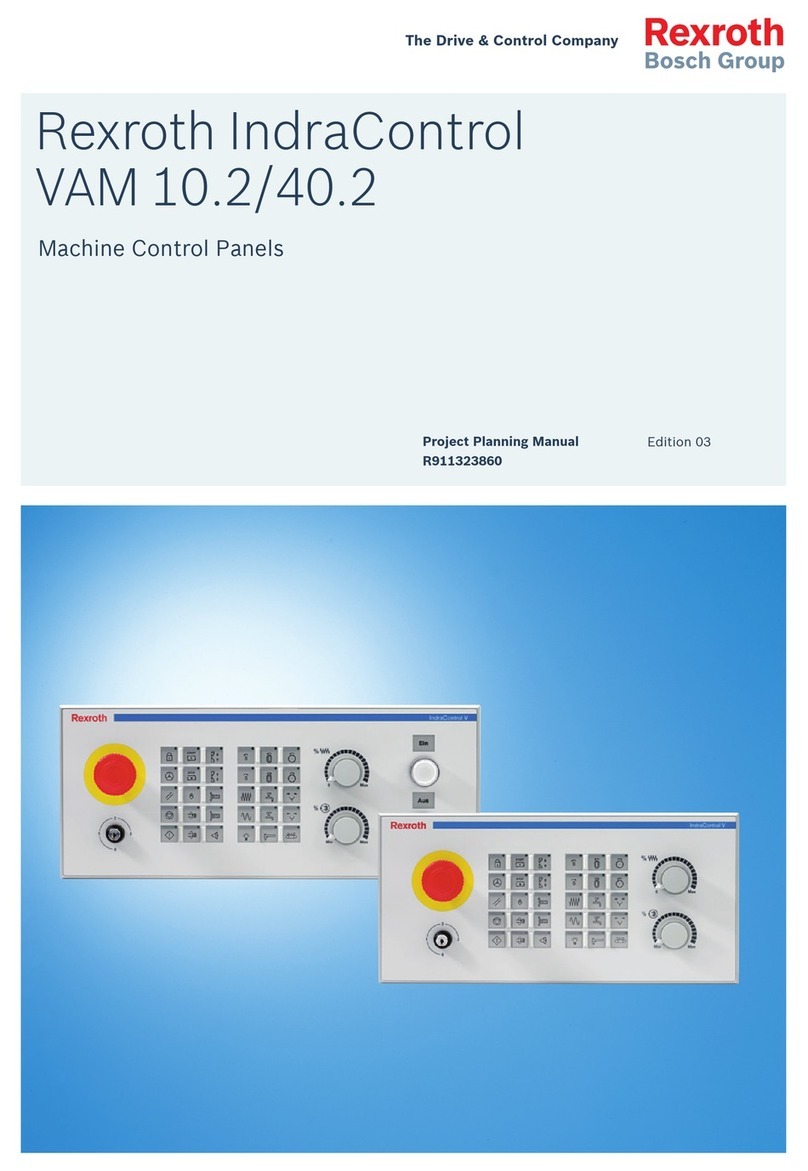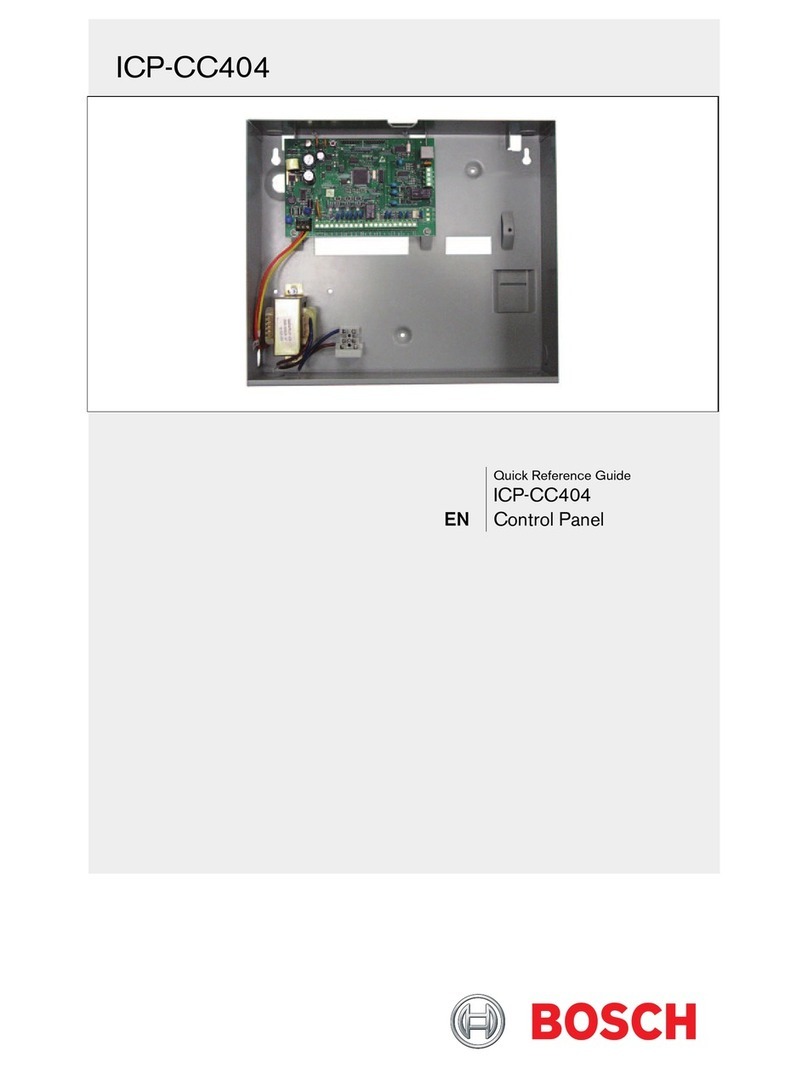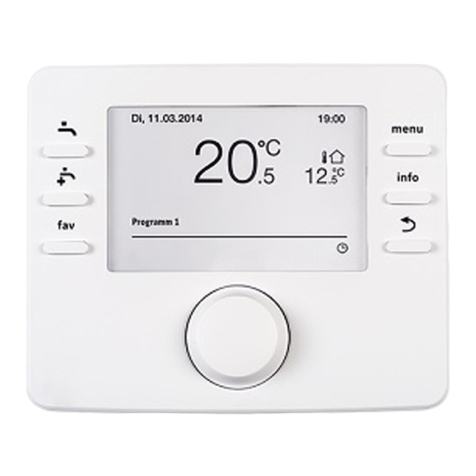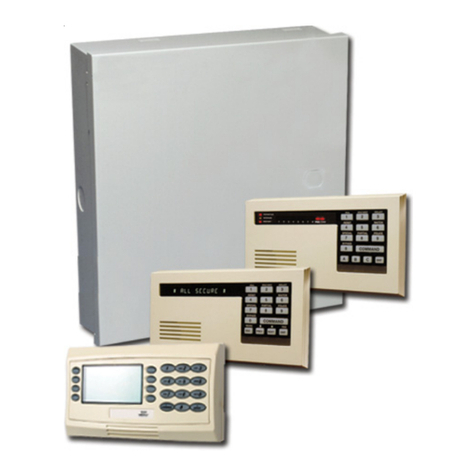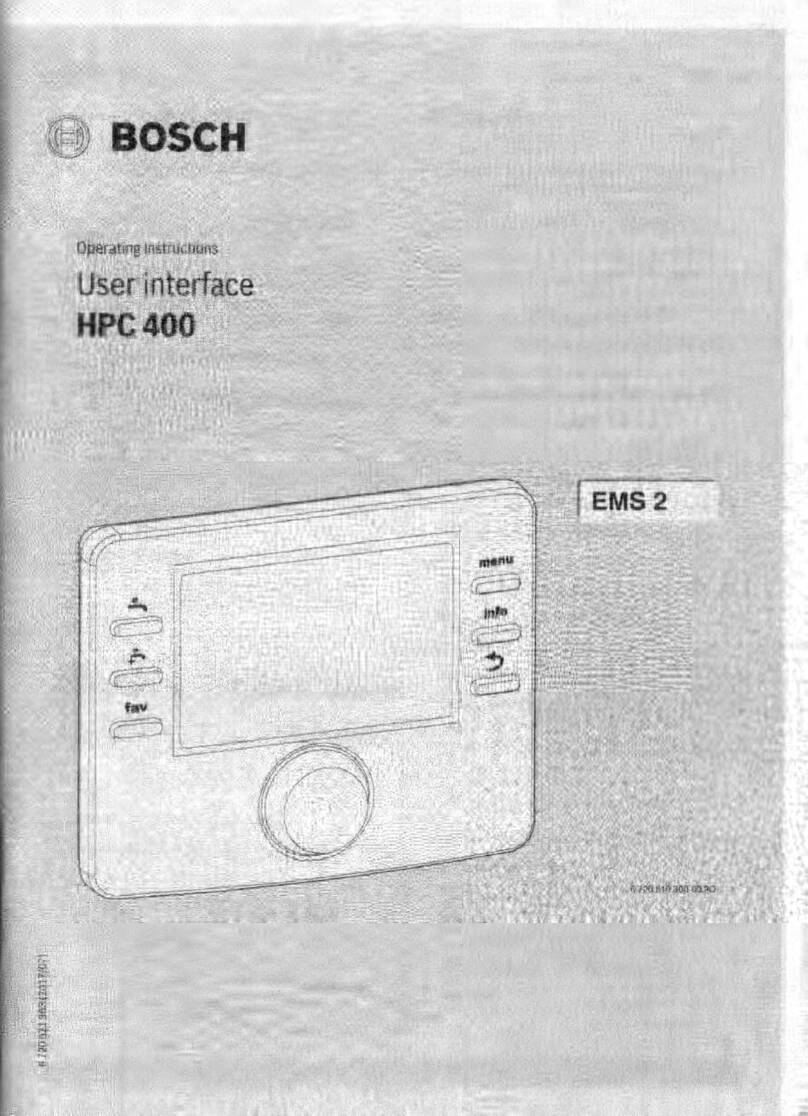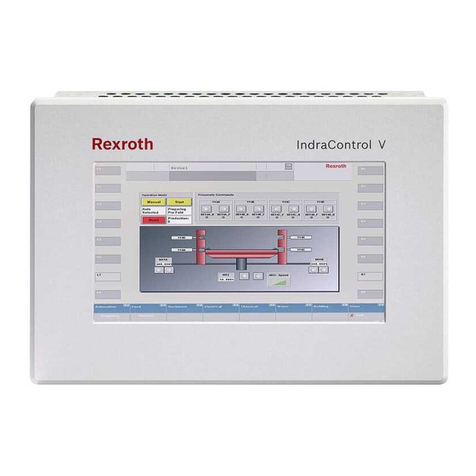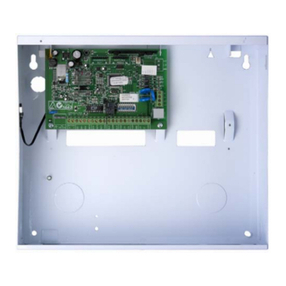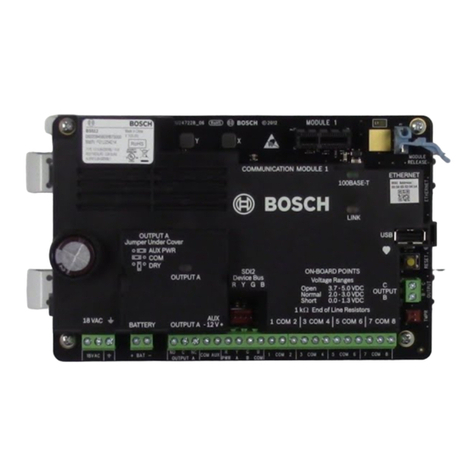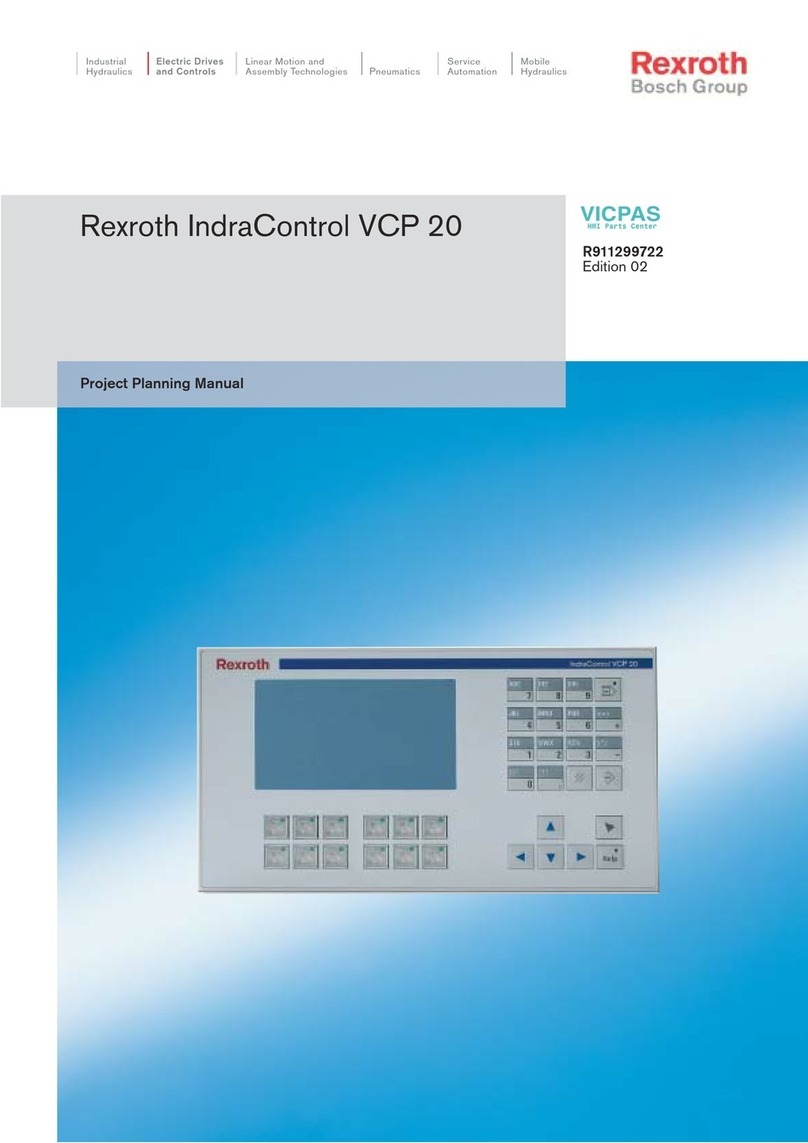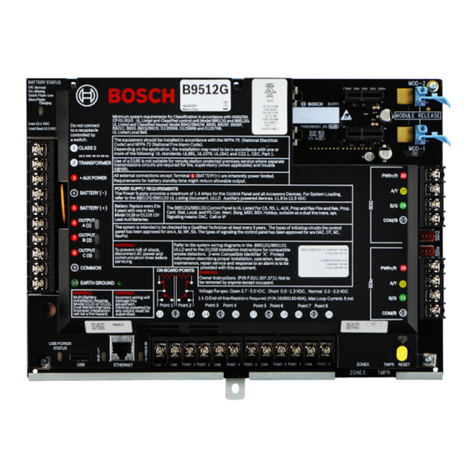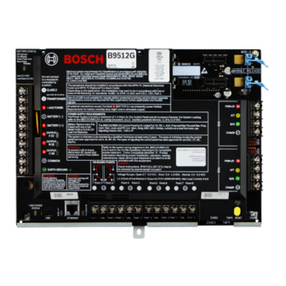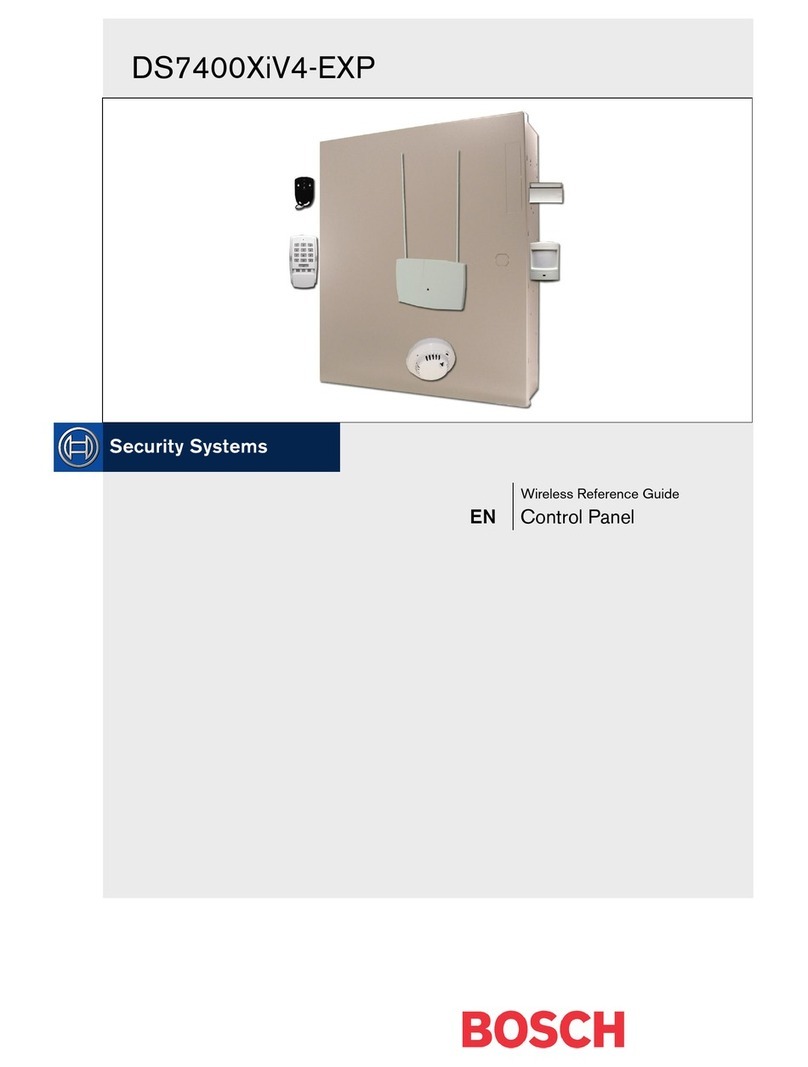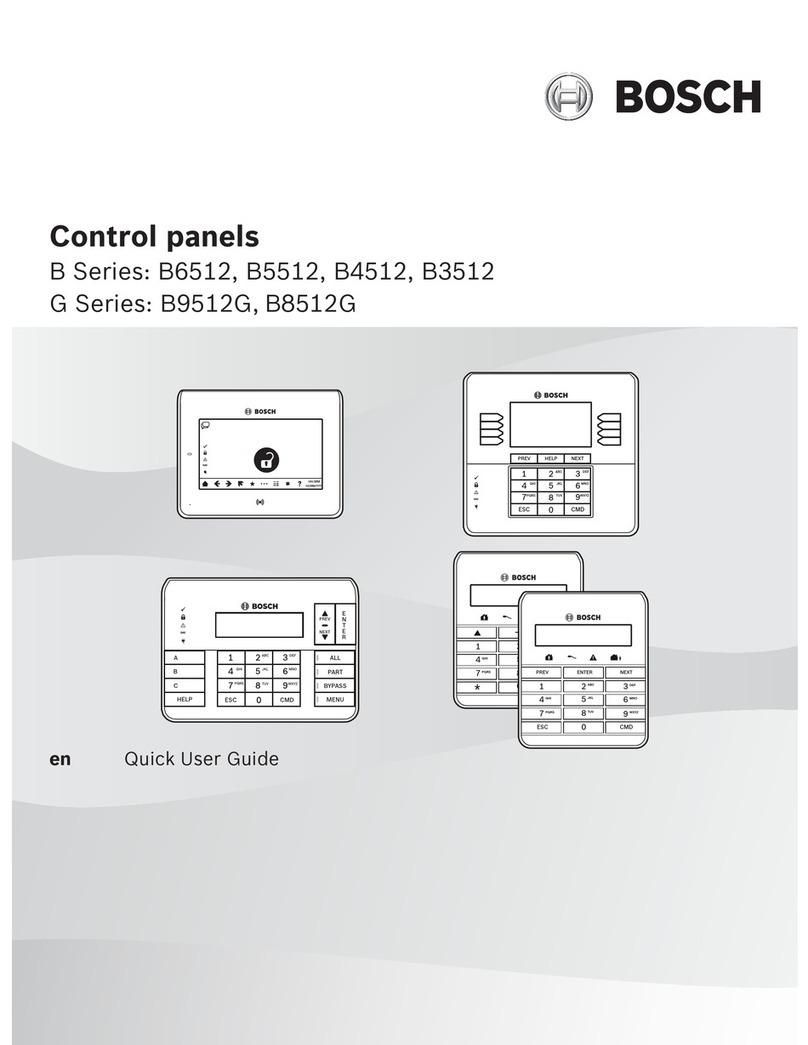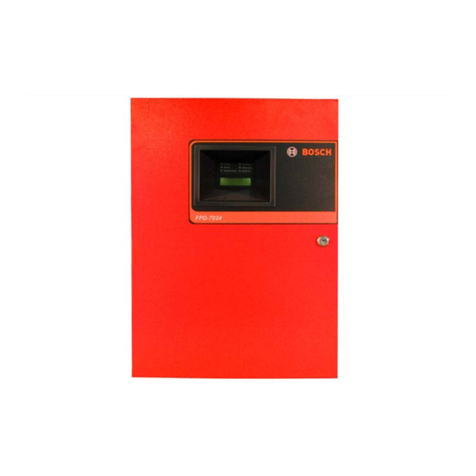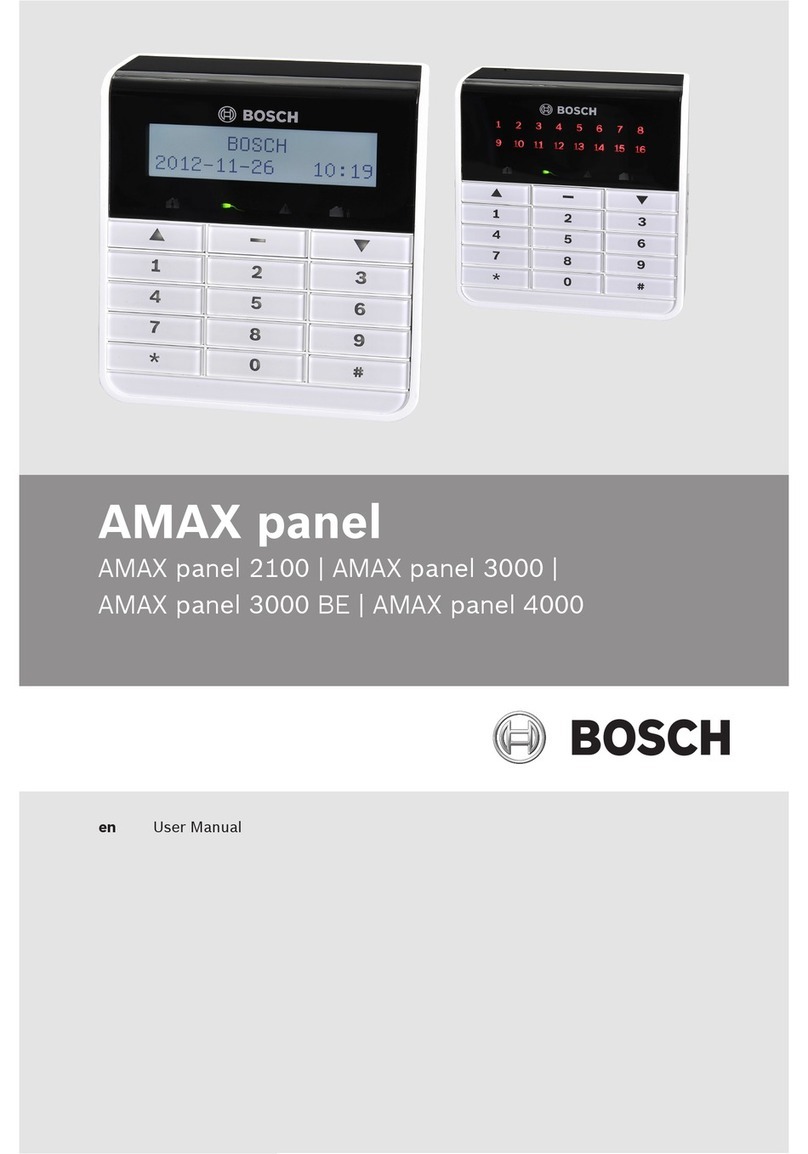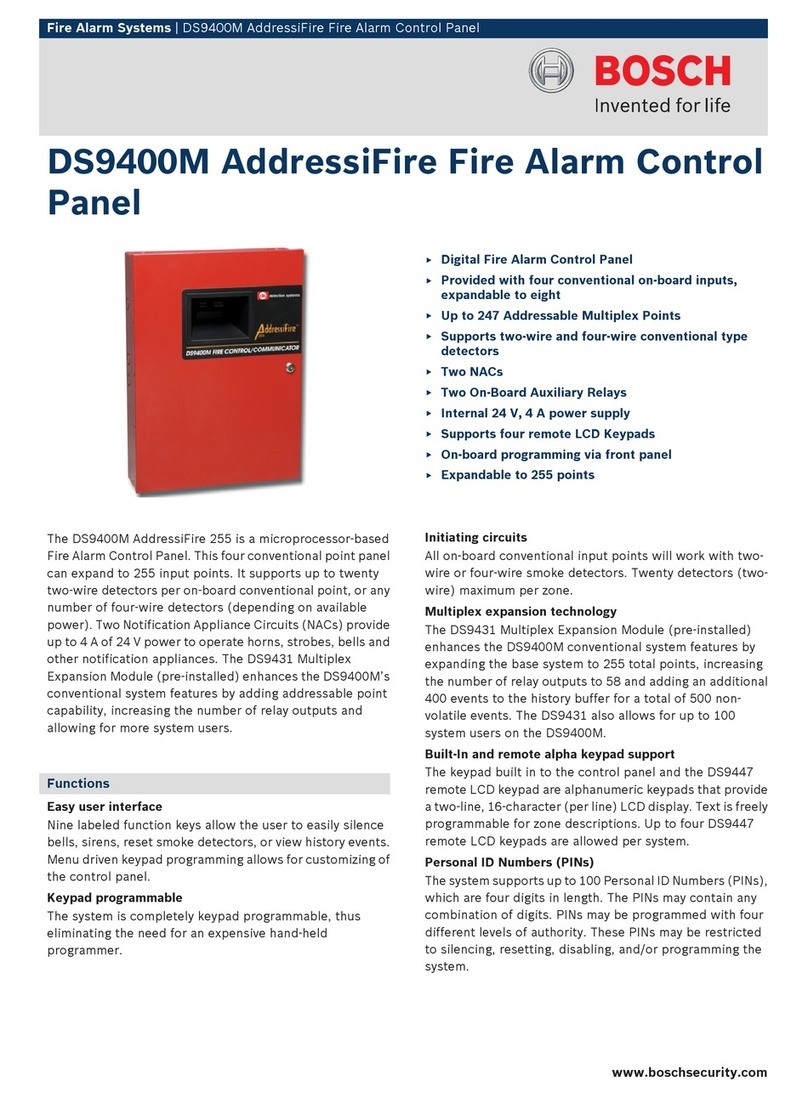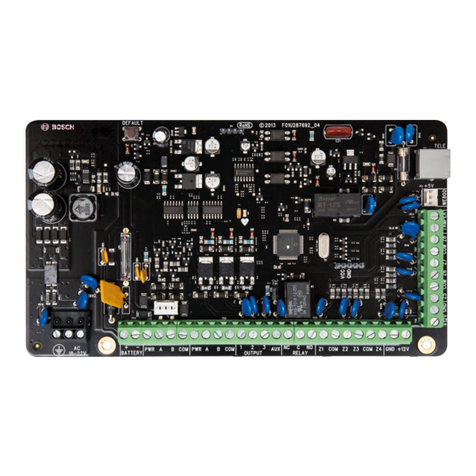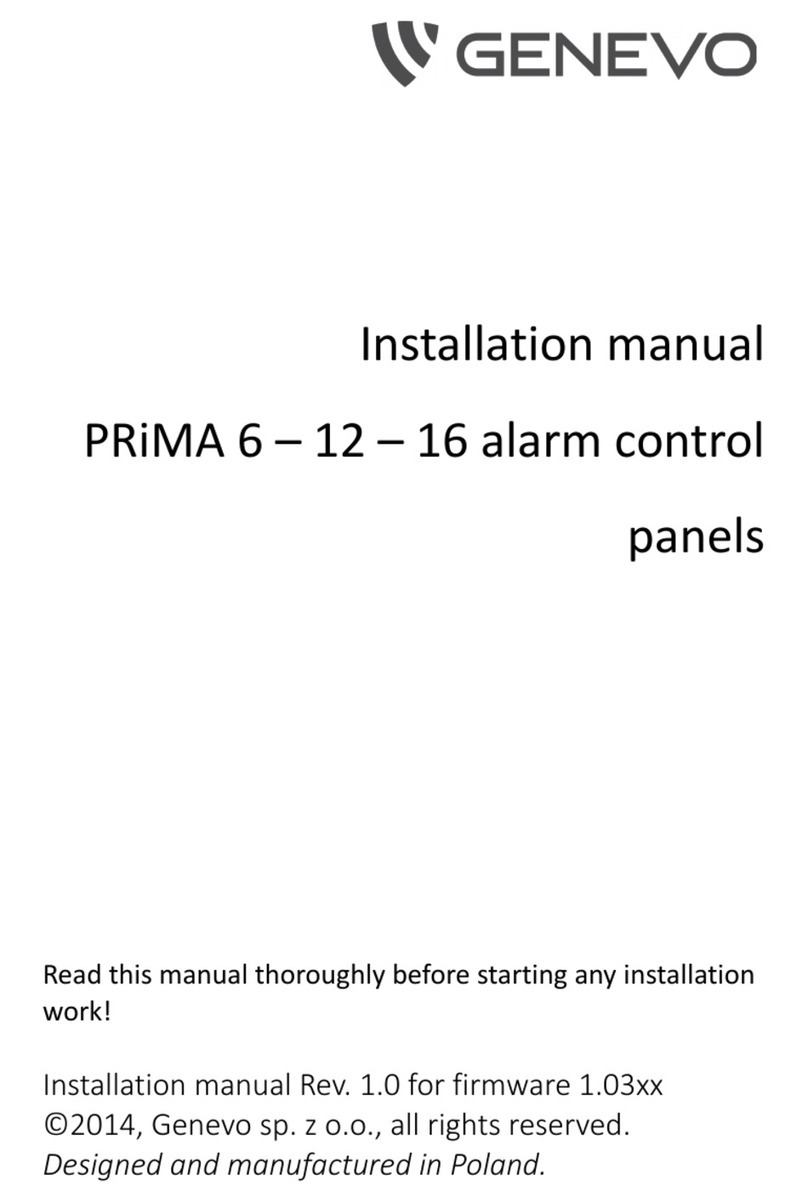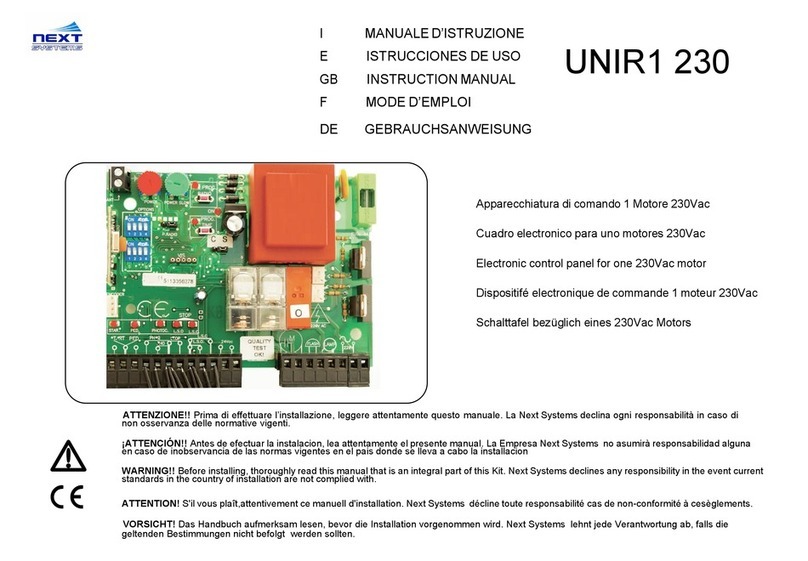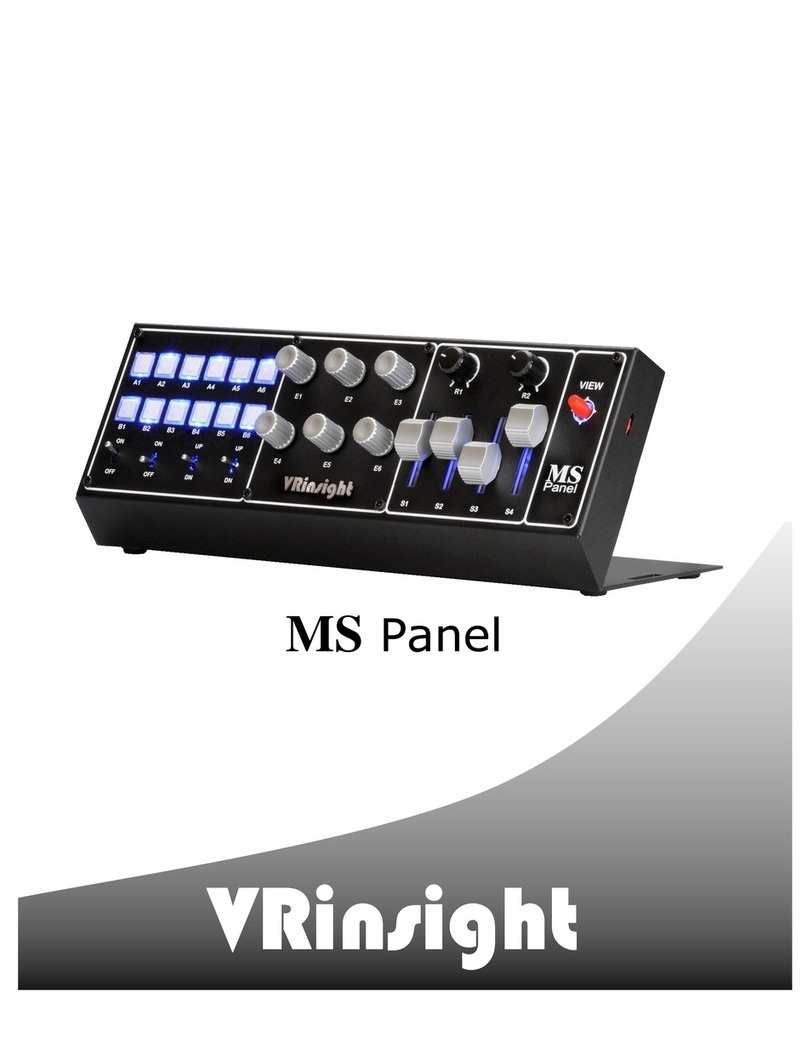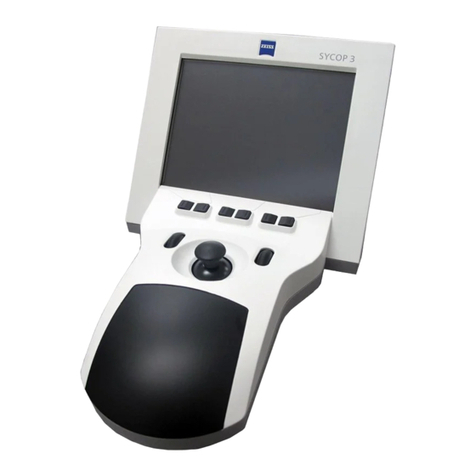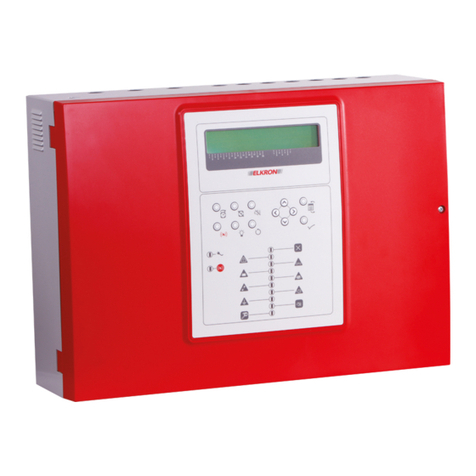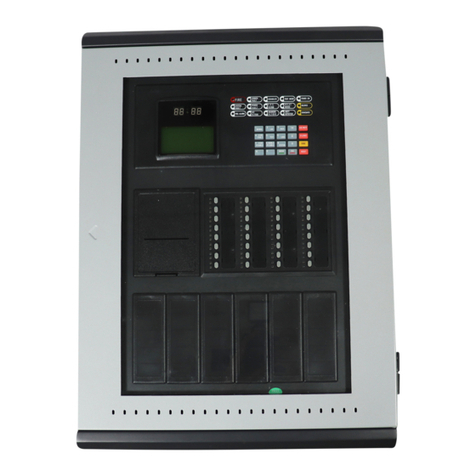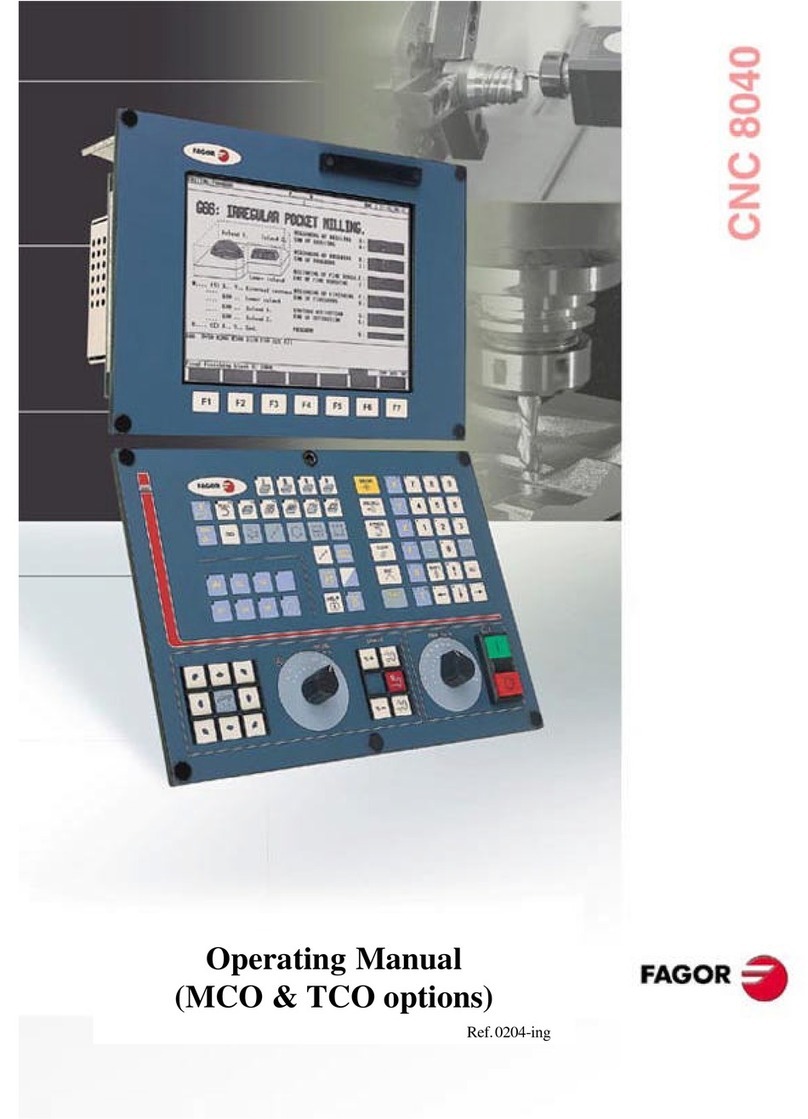
ICP-CC408 | Installation Guide | Contents EN | 4
Bosch Security Systems, Inc. | 12/08 | F01U089463-02
6.4.2 Arming the System in STAY Mode 1 ..........39
6.4.3 Arming the System in STAY Mode 2 ..........39
6.4.4 Horn Speaker Test...........................................40
6.4.5 Bell Test ............................................................40
6.4.6 Strobe Test........................................................40
6.4.7 Turning Day Alarm On and Off ...................40
6.4.8 Fault Analysis Mode........................................40
6.4.9 Initiate a Modem Call.....................................40
6.4.10 Reset Latching Outputs ..................................40
6.4.11 Codepad Buzzer Tone Change......................40
6.4.12 Send Test Report .............................................41
7.0 Remote Arming by Telephone......................41
8.0 Alarm Link Software.......................................41
8.1 Remote Connect..............................................41
8.1.1 Remote Connect with Customer Control....41
8.1.2 Remote Connect without Callback
Verification.......................................................42
8.1.3 Remote Connect with Callback Verification42
8.1.4 Direct Connect.................................................42
8.2 Alarm Link Options ........................................42
9.0 Domestic Dialing .............................................43
9.1 Domestic Dialing Function.............................43
9.2 Setting Up and Programming Domestic
Reporting ..........................................................43
10.0 Dialer Reporting Formats...............................44
10.1 Transmission Formats .....................................44
10.1.1 Contact ID Format ..........................................44
10.1.2 Point ID Codes ................................................44
10.1.3 4 + 2 Reporting Format..................................44
10.1.4 Basic Pager Reporting Format .......................45
10.2 Basic Pager Display Information...................46
11.0 Dialer Information...........................................49
11.1 Primary Telephone Number for Receiver 1
and Receiver 2 .................................................49
11.2 Secondary Telephone Number for Receiver
1 and Receiver 2..............................................50
11.3 Handshake Tone for Receiver 1 and
Receiver 2.........................................................50
11.4 Transmission Format for Receiver 1 and
Receiver 2.........................................................50
11.5 Subscriber ID Number for Receiver 1 and
Receiver 2.........................................................50
11.6 Dialing Format.................................................51
11.7 Telco Arming Sequence .................................51
11.8 Telco Disarming Sequence.............................51
11.9 Call Back Telephone Number.......................51
11.10 Ring Count .......................................................52
11.11 Telephone Line Fault Options.......................52
12.0 Dialer Options..................................................53
12.1 Dialer Options 1 ..............................................53
12.2 Dialer Options 2.............................................. 53
12.3 Dialer Options 3.............................................. 54
12.4 Alarm Link Options ....................................... 54
13.0 Access Codes................................................... 54
13.1 Installer Code .................................................. 54
13.2 User Codes....................................................... 54
13.2.1 ICP-CC408 User Codes................................. 54
13.3 User Code Priority.......................................... 55
14.0 Zone Information............................................ 56
14.1 Day Alarm Information ................................. 56
14.1.1 Day Alarm Resetting...................................... 56
14.1.2 Day Alarm Latching....................................... 56
14.1.3 Day Alarm Operation .................................... 56
14.2 EOL Resistor Value........................................ 56
14.3 Zone Programming......................................... 58
14.3.1 ICP-CC408 Zone Defaults............................. 58
14.3.2 Zone Types ...................................................... 59
14.3.3 Zone Pulse Count............................................ 60
14.3.4 Zone Pulse Count Time ................................. 60
14.3.5 Zone Options 1 ............................................... 60
14.3.6 Keyswitch Zone Options................................ 61
14.3.7 Zone Options 2 ............................................... 62
14.3.8 Zone Report Code.......................................... 63
14.3.9 Zone Dialer Options....................................... 63
14.4 Swinger Shutdown Count for Siren.............. 63
14.5 Swinger Shutdown Count for Dialer............ 63
15.0 System Reporting Information...................... 64
15.1 Zone Status – Bypass Reports ....................... 64
15.2 Zone Status – Trouble Reports ..................... 64
15.3 Zone Status – Sensor Watch Reports........... 64
15.4 Zone Status – Alarm Restore Code.............. 65
15.5 Zone Status Reporting Options..................... 65
15.6 Open/Close Reports....................................... 65
15.7 Open/Close Reporting Options.................... 65
15.8 Codepad Duress Report................................. 65
15.9 Codepad Panic Report................................... 65
15.10 Codepad Fire Report...................................... 66
15.11 Codepad Medical Report .............................. 66
15.12 Codepad Reporting Options......................... 66
15.13 System Status – AUX Power Supply Fail
Report............................................................... 66
15.14 System Status – AUX Power Supply Fail
Restore Report ................................................ 66
15.15 System Status – AC Fail Report.................... 66
15.16 System Status – AC Fail Restore Report..... 66
15.17 System Status – Low Battery Report............ 67
15.18 System Status – Low Battery Restore Report67
15.19 System Status – Access Denied..................... 67
15.20 System Status Reporting Options ................. 67
15.21 Test Reporting Time ...................................... 67
